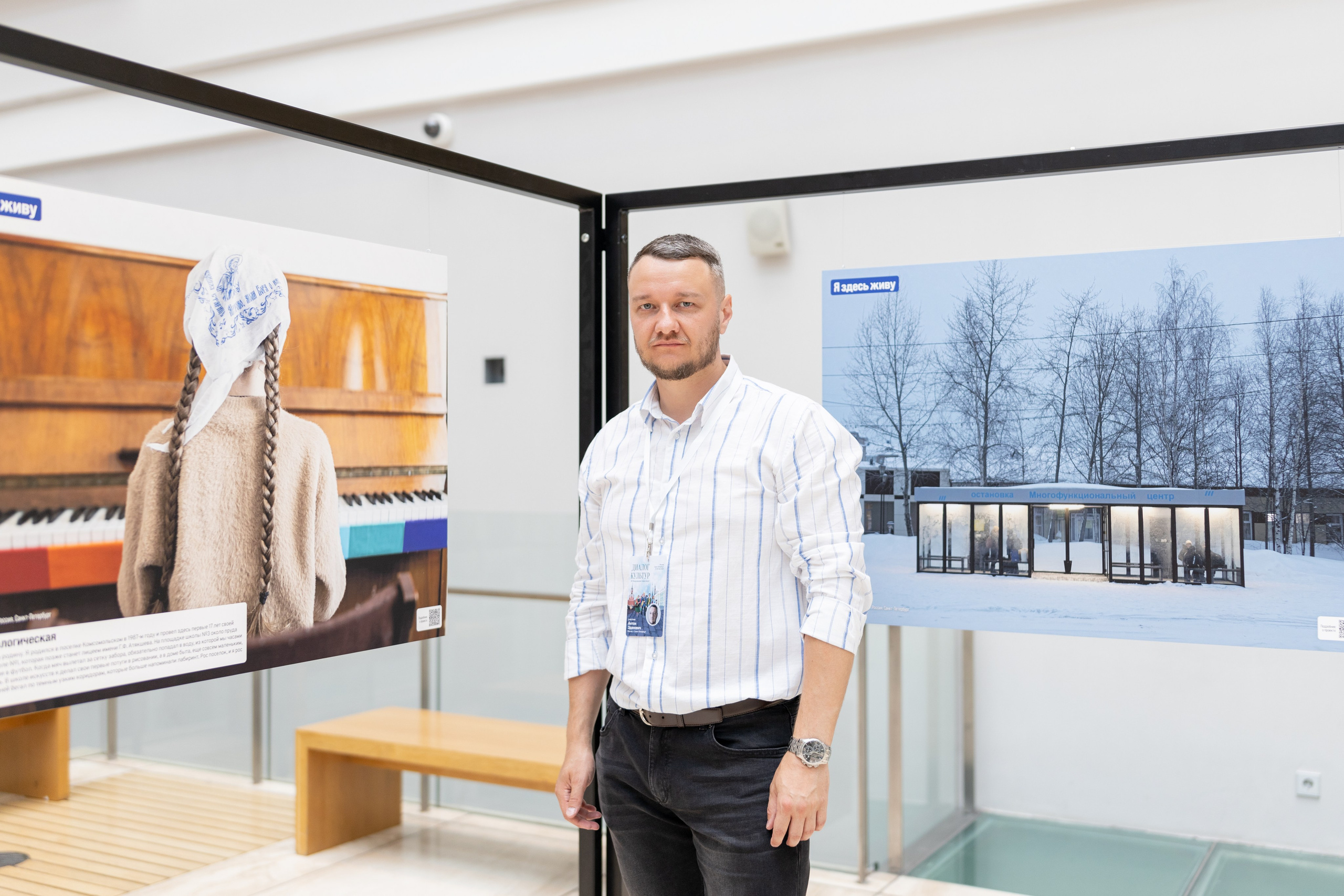Group exhibition at the State Hermitage Museum (St. Petersburg) as part of the XIX International Forum “Dialogue of Cultures” (2025)
Geological Station
“This story is about my homeland. I was born in Komsomolsky settlement in 1987 and spent the first 17 years of my life here. I studied at school No. 1, which would later become the Lyceum named after G.F. Atyakshev. On the playground of school No. 3 near the pond, my friends and I used to play soccer. When the ball flew out of the fence net, it necessarily hit the water, from which we spent hours trying to retrieve it. At the school of arts I made my first attempts at drawing, and in the house of everyday life, still very small, raced with the kids running through the dark narrow corridors, which looked more like a labyrinth. The settlement grew and I grew with it”.
65 years ago there was impassable Siberian taiga on the place of Yugorsk. These places in Western Siberia were called “dead forest” by indigenous peoples. There were no commercial animals here, the temperature dropped below -50, and almost half of the territory was swamped. After the end of the war the country needed timber and in the early 60's the construction of the railroad began here and the first logging settlements appeared. One of them is Komsomolsky settlement. Enthusiasts from different regions of the Soviet Union traveled to the harsh conditions of the north, built houses and families here. Now the descendants of the first geologists and indigenous minorities of the north live here together.
It has been more than 30 years since the village of Komsomolsky became the town of Yugorsk. Logging was replaced by the development of gas fields. Now the largest gas transportation company in the world — Gazprom Transgaz Yugorsk — is located here, and there is almost nothing to remind of the small settlement where the first geologists came. Meanwhile, there are still pioneers and people who made the settlement with a couple hundred people a town.





